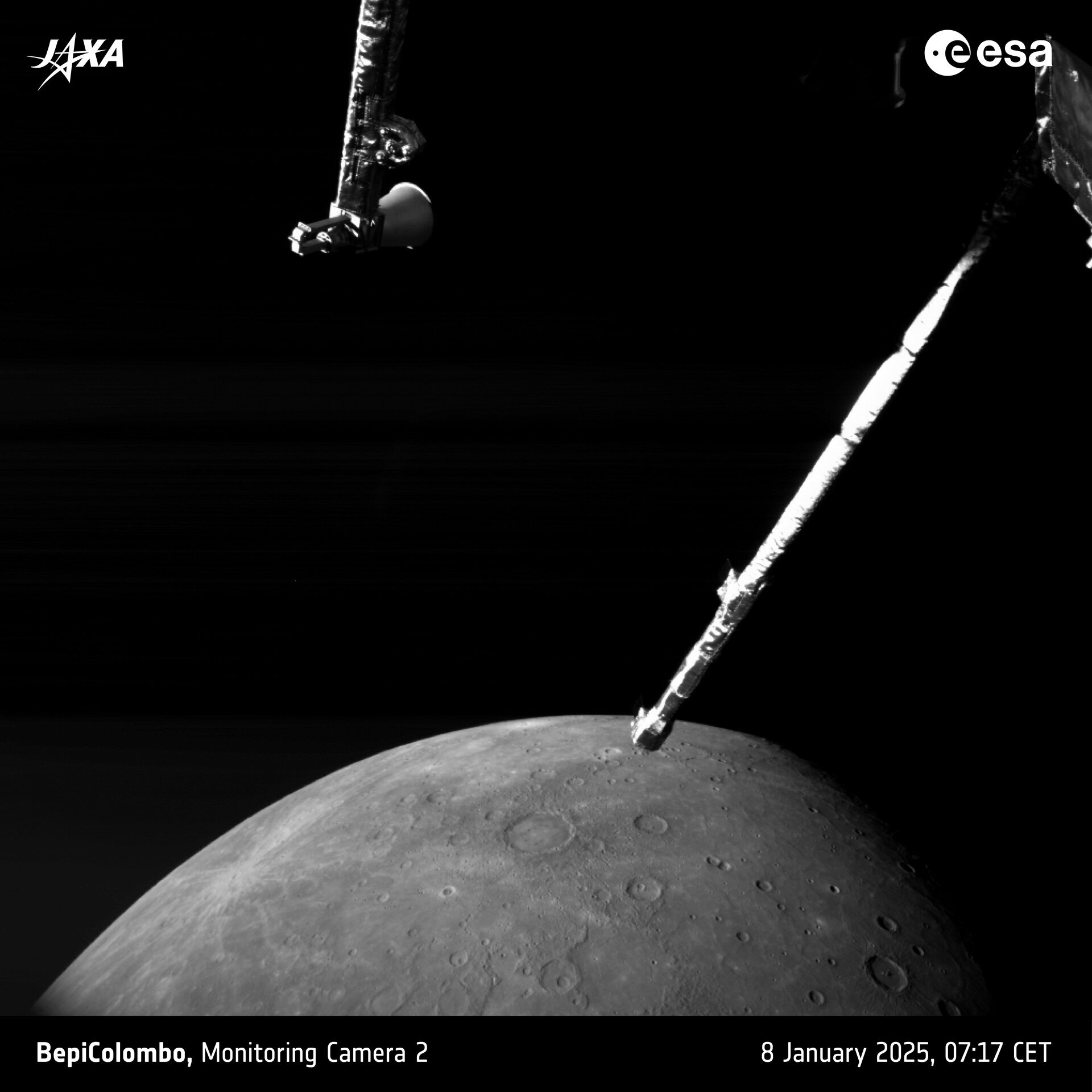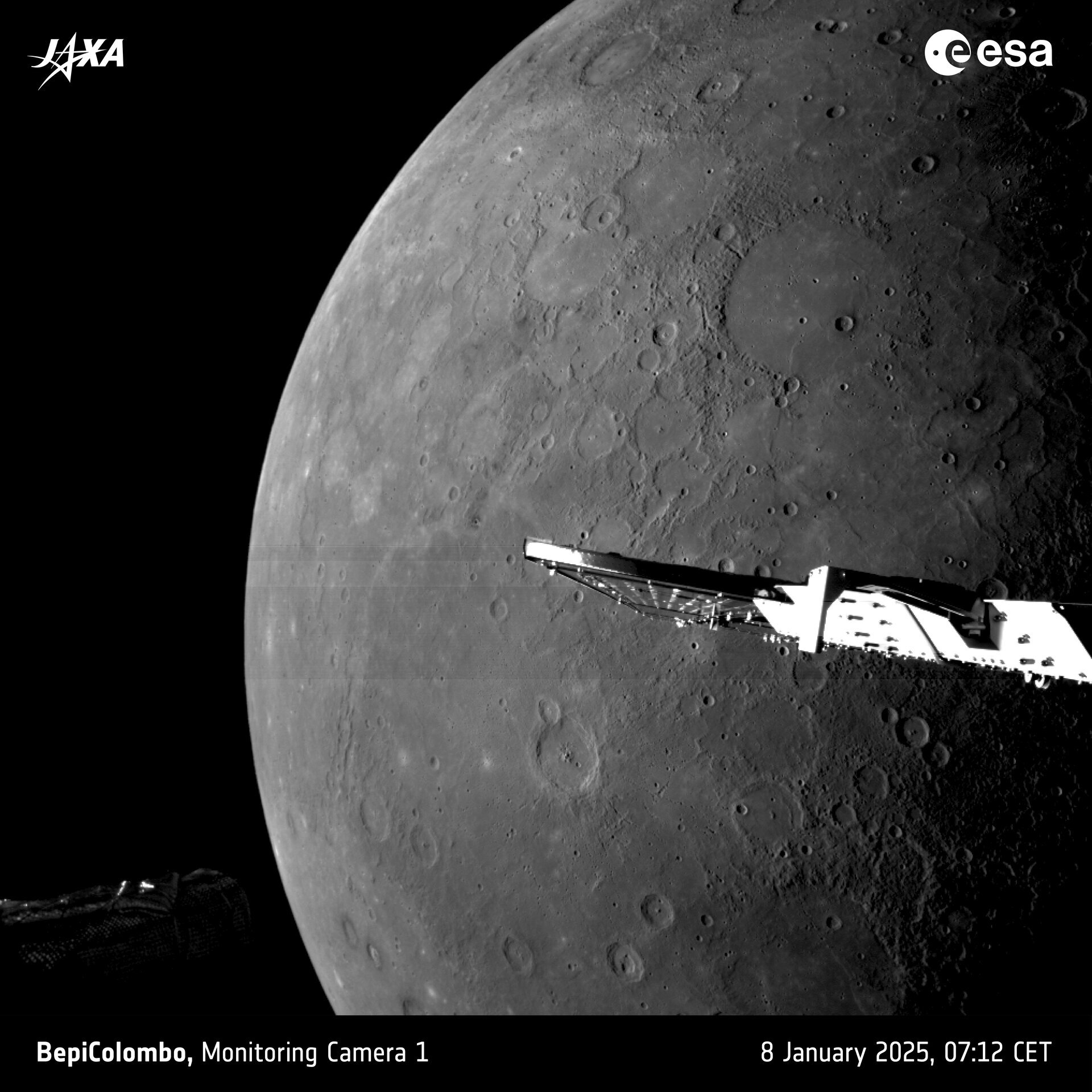
New photos of Mercury's mysterious north pole reveal a glimpse of the permanently dark, frigid craters that may hold ice dozens of feet thick, even though Mercury is the closest planet to the sun.
Mercury's surface can reach a blistering 800 degrees Fahrenheit (430 degrees Celsius) during the day, according to NASA. But the planet lacks an atmosphere to hold that heat in — so, on Mercury, dark equals cold. At night, temperatures can plunge to minus 290 F (minus 180 C). The planet's north pole is pockmarked by craters whose bottoms are always in shadow. Research has shown that these crater bottoms likely contain thick deposits of water ice.
The new images of these cold craters come courtesy of BepiColombo, a joint mission of the Japan Aerospace Exploration Agency and the European Space Agency (ESA). The BepiColombo spacecraft will start orbiting Mercury in 2026. Right now, it's conducting a series of flybys of the planet to get into position for that orbit. On Jan. 8, one of those flybys brought the craft within 183 miles (295 kilometers) of the planet's surface. BepiColombo also passed right over Mercury's north pole.
Lands of perpetual shadow
The spacecraft sent back a series of stark images, including photos of the perpetually shadowed Prokofiev, Kandinsky, Tolkien and Gordimer craters. It also snapped photos of Borealis Planitia, where massive lava flows 3.7 billion years ago created a smooth plain, according to ESA. The pictures show Mercury's biggest impact crater, as well as a mysterious, boomerang-shaped lava flow.
Related: 10 jaw-dropping space photos that defined 2024


A third image shows Nathair Facula, a light-colored region left behind by volcanic eruptions in the planet's past. Younger areas on Mercury are lighter, according to ESA; though researchers don't know what the planet's surface is made of, it clearly darkens with age. Near Nathair Facula is another bright spot, Fonteyn crater, which formed in an impact 300 million years ago.
When the BepiColombo spacecraft enters Mercury's orbit, it will separate into two orbiters that will focus on the planet's north and south poles. Among the questions it will probe, according to ESA, is whether water ice really exists in the planet's craters and what Mercury's surface is actually made of.







